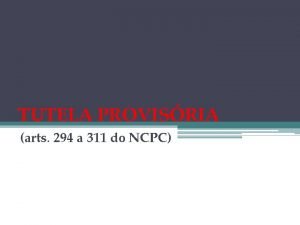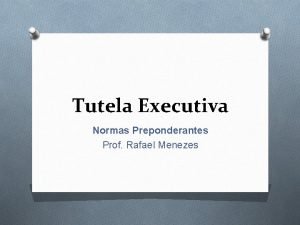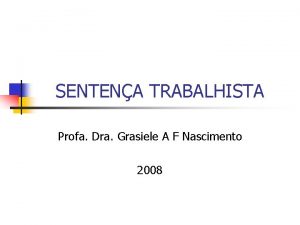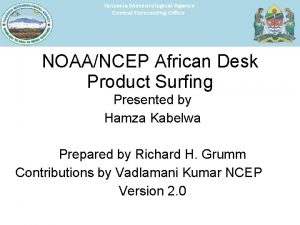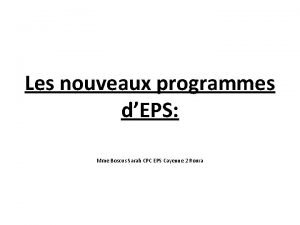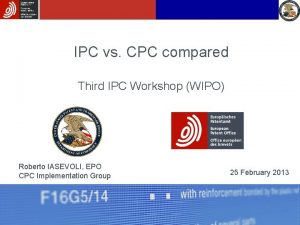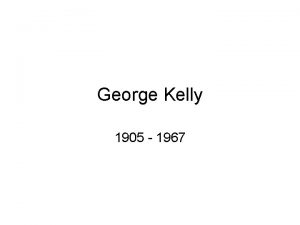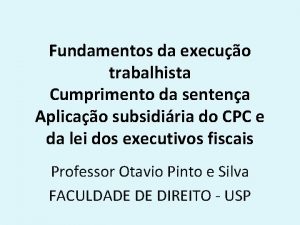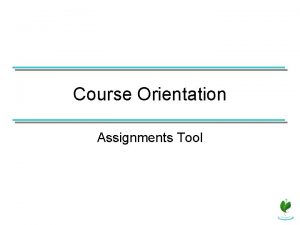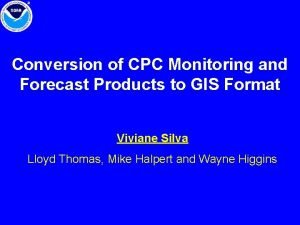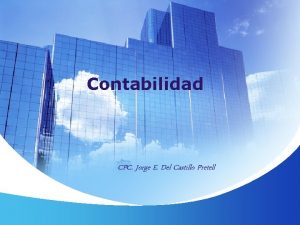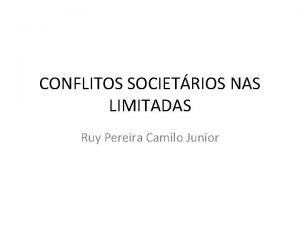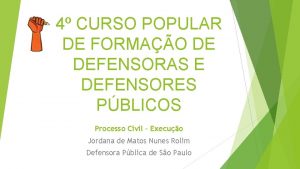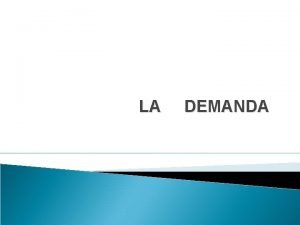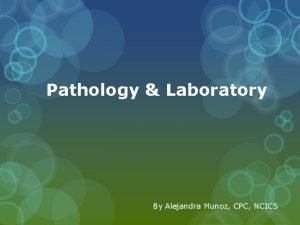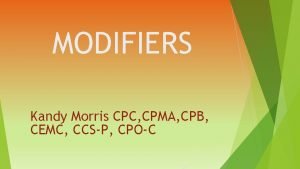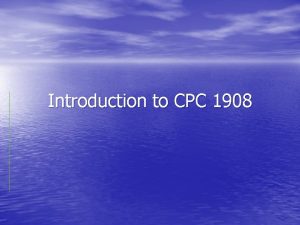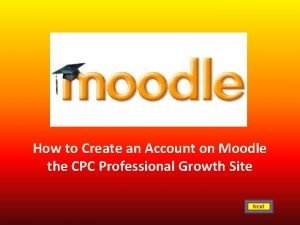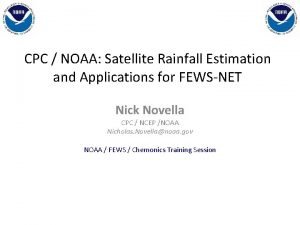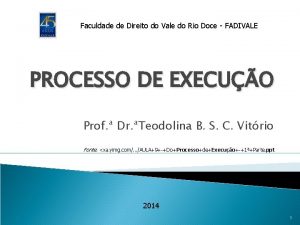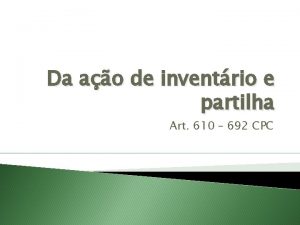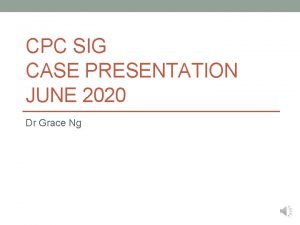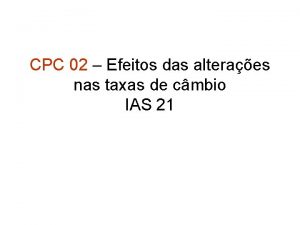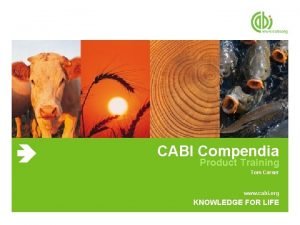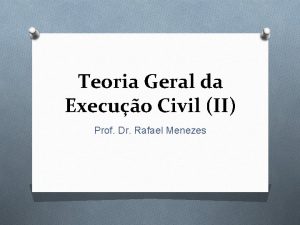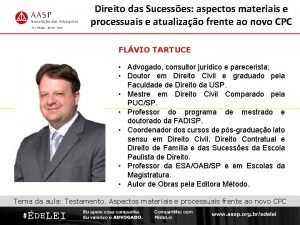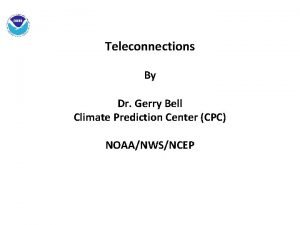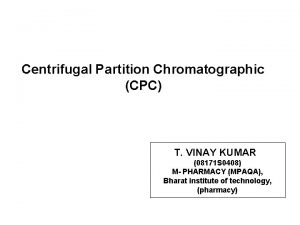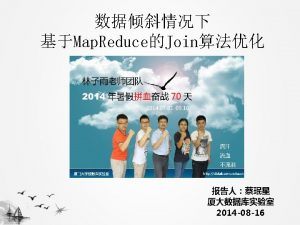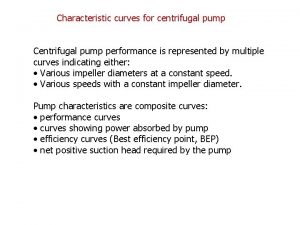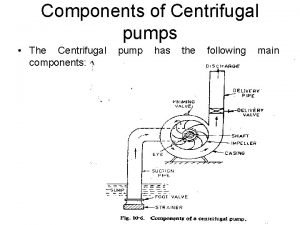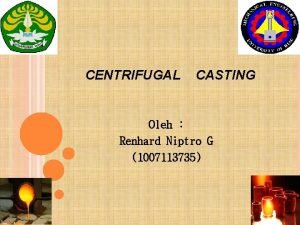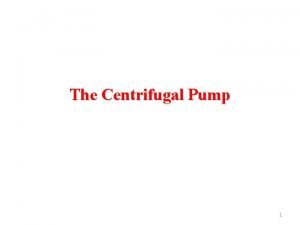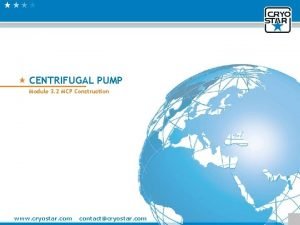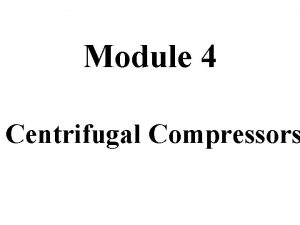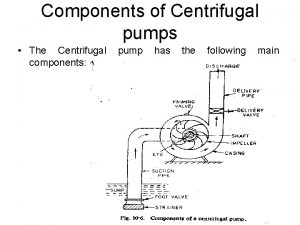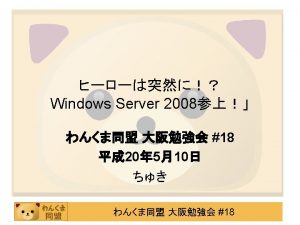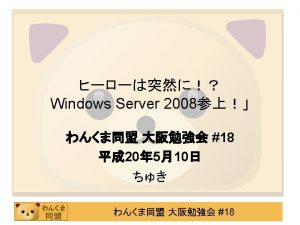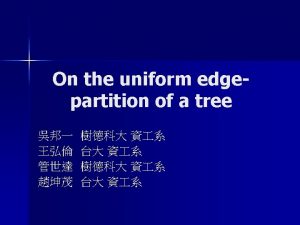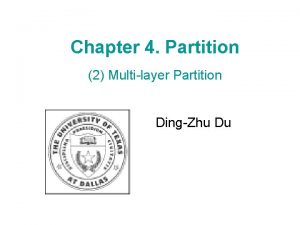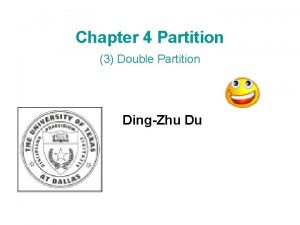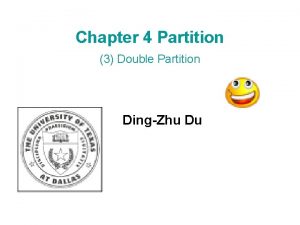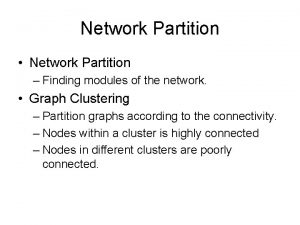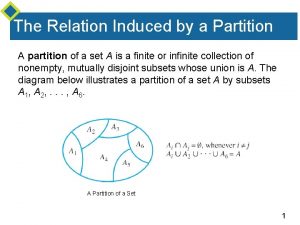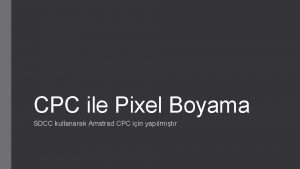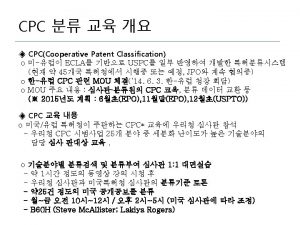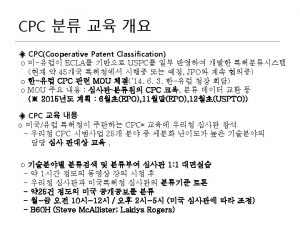Centrifugal Partition Chromatographic CPC Technology Application for Natural




![Partition Coefficient For a given substance “A” the partition coefficient is defined as: [A] Partition Coefficient For a given substance “A” the partition coefficient is defined as: [A]](https://slidetodoc.com/presentation_image_h2/4cb3d4b3f40d9fd862267806e9cb27bc/image-5.jpg)

























- Slides: 30

Centrifugal Partition Chromatographic (CPC) Technology: Application for Natural Product Isolation Udaya N. Wanasundara Pilot Plant Corporation 118 Veterinary Road Saskatoon, SK Canada

Topics Covered in Presentation 1 – Introduction to Counter-Current Chromatography (CCC) & CPC 2 – CPC Instrumental setup & components 3 – The advantages of CPC technology 4 – Applications of CPC technology 5 – About POS Pilot Plant Corporation

Topic 1: Introduction to Counter-Current Chromatography (CCC) & CPC

Counter Current Chromatography (CCC) Ø A separation technique that involves two liquid phases flowing in opposite direction. Ø Analogous to other chromatographic methods: The stationary phase and the mobile phase result in a relative countercurrent motion. Ø Both stationary and mobile phases are liquids. Ø Separation is based on the partition co-efficient ( ) of the components in mixture.
![Partition Coefficient For a given substance A the partition coefficient is defined as A Partition Coefficient For a given substance “A” the partition coefficient is defined as: [A]](https://slidetodoc.com/presentation_image_h2/4cb3d4b3f40d9fd862267806e9cb27bc/image-5.jpg)
Partition Coefficient For a given substance “A” the partition coefficient is defined as: [A] A= [A] upper phase/[A] lower phase A is a constant at any given temperature, and unaffected by the presence of other substances or concentration of the solute in question.

The Basis of CPC Technology When a compound is dissolved in a mixture of two liquids, the compound will concentrate more in one of the liquids. The compact CPC unit uses over one thousand extraction cells in a high speed spinning disk pack to separate and purify the desired compound. Each cell increases the purity of the desired compound until a high purity product is created.

Summary of CPC Technology CENTRIFUGAL PARTITION CHROMATOGRAPHY • CPC is derived from CCC. • A new liquid chromatographic technique utilizing liquid-liquid partition and counter-current distribution of solutes between 2 immiscible liquid phases. • No solid support for the stationary phase is involved. • Stationary phase solvents are retained in the column by the action of centrifugal force.

Topic 2: CPC Instrument Setup & Components


CPC Rotor Elements Partition Disc Partition Channels Partition Disc Pack

The Inner Workings of the CPC

Topic 3: The Advantages of CPC Technology

The Advantages of CPC Technology CPC HPLC No column Expensive columns High recovery Irreversible adsorption High throughput Poor loadability Retention of fragile Compounds (molecular integrity) Loss of biological activity (denaturation) Volume ratio of stationary/mobile very high (better resolution) Ratio is low

Topic 4: Applications of CPC Technology

CPC Technology has Applications in the Following Industries Nutraceutical Fine Chemicals Pharmaceutical Bio-Medical Biotechnology Fats and Oils Fermentation

Compounds That Can Be Isolated in High Purity by CPC Technology Saponins Alkaloids Chlorophylls Tannins Carotenoids Phospholipids Fat soluble vitamins Mono/Oligo-saccharides Anthocyanins Lignans Phenolic compounds Synthetic Compounds Other active compounds present in plants (e. g. , herbs and spices) Much more!

Fractionation of Tea Polyphenols by CPC Isolation of tea catechins by CPC technology Solvent system: Chloroform/methanol/n-propanol/water (9: 12: 2: 8 v/v) Purity was determined by HPLC Source: Okuda et al. , J. Liqud Chromato. (1990)

Purification of Ginsenosides from Ginseng Isolation of Ginsenosides by CPC technology Solvent system: Ethyl acetate/1 -butanol/water Purity was determined by TLC Source: Le et al. , J. Liqud Chromato. (1995)

Methods Developed by POS Bio-Separation Unit POS has developed several procedures to obtain high purity bio-active compounds: e. g. High value Fatty Acids Natural Tocopherols

Response Purification of DHA by CPC Starting oil: DPA = 15. 2% DHA = 39. 7% After CPC separation DHA = 84. 6% DPA = 84. 9% C 14: 0 = 11. 7% Response 20 40 60 80 100 140 120 Pre-purified DHA to 66. 4% and DPA to 24. 3% by urea CPC separation DPA = 90. 8% 20 40 60 80 Time (min) 100 DHA = 98. 7% 120 140

Purification of GLA from Borage Oil by CPC FA (%) C 16: 0 C 16: 1 C 18: 0 C 18: 1 C 18: 2 C 18: 3 (GLA) C 18: 3 C 18: 4 C 20: 1 C 20: 2 C 22: 0 C 22: 1 C 24: 1 10. 33 4. 34 16. 9 36. 1 21. 8 0. 20 0. 17 4. 11 0. 19 0. 22 2. 91 1. 84 1400 1200 CPC 1000 m. V BORAGE OIL Fraction VI 800 600 400 200 0. 0 C 18: 2=98% GLA = 98. 3% 10 30 50 70 90 Minutes 110 130

High Purity GLA from Borage Oil by CPC Fraction VI m. V Pre-purified GLA to 40% by salt solubility method CPC separation GLA = 99. 0% 0. 00 10. 00 20. 00 30. 00 40. 00 50. 00 60. 00 70. 00 80. 00 Minutes 90. 00 100. 00 110. 00 120. 00 130. 00 140. 00 150. 00 160. 00

Purification of Arachidonic Acid By CPC 1600 m. V 1200 800 400 C 16: 0 = 11. 0% C 18: 1 = 85. 6% 0. 0 20. 00 40. 00 60. 00 Minutes 80. 00 C 20: 4 n 6 = 83. 3% C 18: 2 = 12. 9% 100. 00 120. 00

Separation of Tocopherols by CPC -Tocopherol Purity = 97% 120. 00 m. V 100. 00 Starting material had 70% tocopherol mixture -Tocopherol Purity = 97% 80. 00 -Tocopherol Purity = 99% 60. 00 40. 00 20. 00 40 60 80 100 120 Minutes 140 160

Topic 5: About POS Pilot Plant Corporation

POS Pilot Plant Corporation Ø POS is a private confidential contract research organization Ø Successfully serving clients for over 20 years in the nutraceutical, lipids, bio-technology, pharmaceutical and related industries. Ø 5 large pilot plant areas and 11 fully equipped laboratories Ø 90 staff covering scientific, technical, project management, operational and administrative functions.

POS Pilot Plant Corporation (continued) Ø POS helps create superior new products more quickly using cost effective methods. Ø Unique facilities and capabilities not available anywhere else. Ø Take new products ideas from conception laboratory bench scale pilot scale custom manufacturing all in one facility. Ø POS is part of Innovation Place: A world class research park and agricultural biotechnology cluster. Ø Up to date and comprehensive web site at www. pos. ca

POS’s CPC Capability Ø Ø Ø Lab Scale CPC: (1. 5 L volume, 5 -25 ml/injection) Pilot Scale CPC: (5. 4 L, 25 -100 gm/injection) New Product Development Production of high purity products for analytical standards, clinical trials, market development and other purposes. All services available on a contract basis with flexible working arrangements. Creation of superior products, faster without capital expenditures on equipment or staffing.

Summary • CPC technology is a new purification technique which can be used to produce very high purity chemical components with distinct advantages. • POS serves clients by developing CPC methods for isolation and purification of chemical components and custom manufacturing of these materials. • POS has developed a number of novel processes to separate bio-active compounds.

How to Contact Us: POS Pilot Plant Corporation 118 Veterinary Road Saskatoon, SK, S 7 N 2 R 4 CANADA http: //www. pos. ca Toll Free: (800) 230 2751 pos@pos. ca Fax: (306) 975 3766 Your Bioprocessing and Bio. Separation Partner
 Art 294 a 311 novo cpc
Art 294 a 311 novo cpc Tutela executiva
Tutela executiva Art. 131 cpc
Art. 131 cpc Gmod surfing
Gmod surfing Sarah-cpc
Sarah-cpc Cpc vs ipc
Cpc vs ipc Commonality corollary
Commonality corollary Artigo 783 cpc
Artigo 783 cpc Noaa corps cpc
Noaa corps cpc Cpc monitoring
Cpc monitoring Que es c.p.c. en contabilidad
Que es c.p.c. en contabilidad Ruy pereira camilo junior
Ruy pereira camilo junior Artigo 775 cpc
Artigo 775 cpc Art 428 cpc
Art 428 cpc Prezentare google
Prezentare google Cpc long range forecast
Cpc long range forecast Cpc lab test
Cpc lab test Cpc cpma
Cpc cpma Civil procedure code 1908
Civil procedure code 1908 Moodle cpc
Moodle cpc Noaa corps cpc
Noaa corps cpc Cpc cycle kelly
Cpc cycle kelly Imprimir rup
Imprimir rup Cpc vale do rio doce
Cpc vale do rio doce Art 610 cpc
Art 610 cpc Cpc case presentation
Cpc case presentation Cpc 02
Cpc 02 Cpc cabi
Cpc cabi Fraude contra credores cpc
Fraude contra credores cpc Testamento particular novo cpc
Testamento particular novo cpc Cpc pna
Cpc pna
